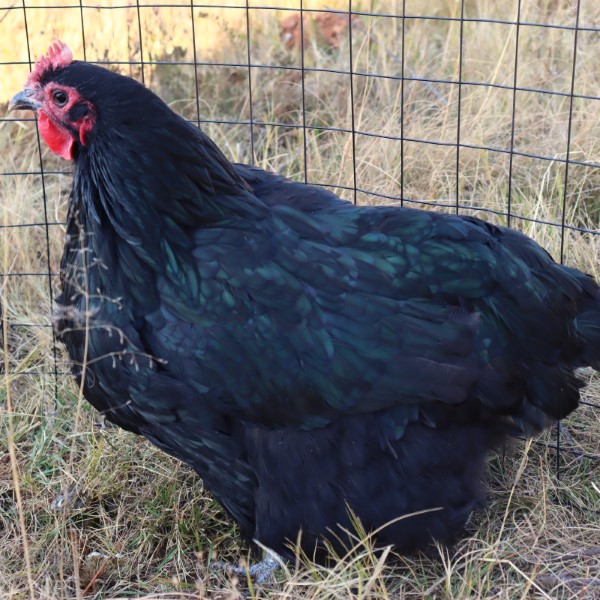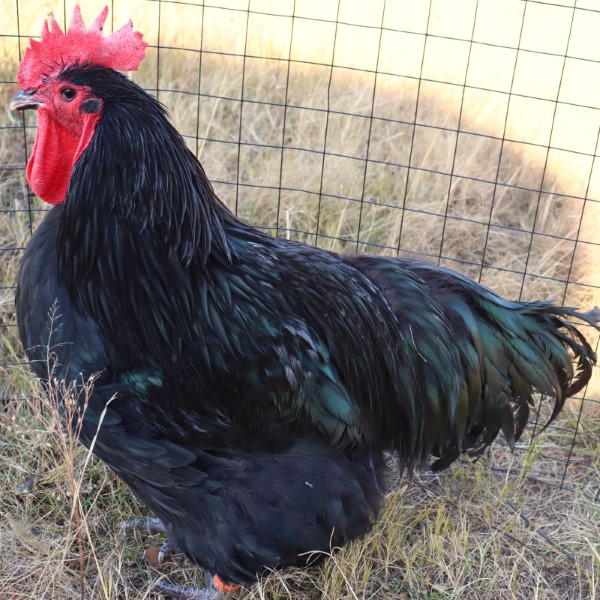

Black Orpington chickens from the poultry yards of William Cook and Joseph Partington were imported into Australia between 1890 and about 1900. In England during this same period, Black Orpingtons were being refined for their meat qualities. However, the Australians immediately valued the breed for its egg-laying ability and continued to breed along the lines of the original type. The Australians were very practical poultry breeders, and so with egg production as a singular goal, they made outcrosses to Minorca, White Leghorn, and Langshan chickens – even as William Cook had in the creation of the Orpington. The end result was an excellent production chicken, but one which little resembled the Orpingtons bred in other countries.
In 1902, during Australia’s winter season, the Hawkesbury Agricultural College held a six-month egg-laying contest among various breeds of chickens. With 41 pens in all, Black Orpingtons took seven of the thirteen top placements. This was the first of many egg-laying contests in which Australian-bred Orpingtons would compete. By 1922-23 “Australian Laying Orpingtons” were setting records. At Geelong, Victoria, a pen of six “Australorp” hens set a world record by laying 1,857 eggs in 365 days – an average of 309.5 eggs each. At the Grafton contest in 1923-24, an Australorp hen laid 347 eggs in 365 days. Soon after a hen of the Burns bloodline broke the world record, laying 354 eggs in twelve months. Another hen set a new world record when she laid an amazing 364 eggs in 365 days!
In recent times (since the advent of the commercial layers or “Hylines”), Austrlorps fell out of favour in the egg industry. The breed endured through the efforts of smaller hatcheries, show breeders and backyard poultry enthusiasts. Today, due to show breeding and competing, the Australorp is a truly magnificent breed, although not as productive as in the prime of the breed.
Black Australorps are a fairly docile breed, child/family friendly and not particularly aggressive to other flock members. Their black feathers have a beautiful green iridescence in the sun that makes them even more stunning. Wattles and single comb should be red and their legs should be slate. They can be good brooders, despite being selectively bred to remove this trait. The trade off is that better sitters lay fewer eggs. They are also (in our experience) the breed mostly likely to produce double yoked eggs!
At Livingseeds Hatchery, we would expect 250-300 large eggs per hen each year, and through intentional selection we plan to improve the productivity of the Black Australorp closer to those world records again.
Livingseeds Hatchery currently supplies the Black Australorp.
